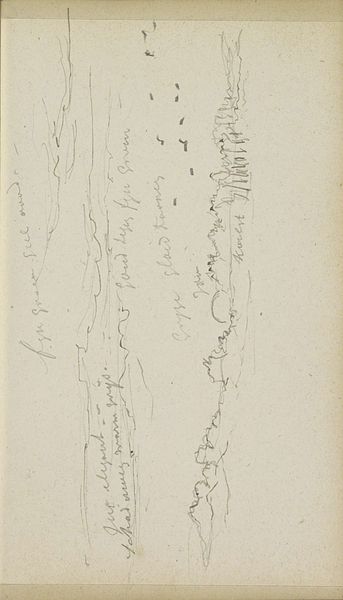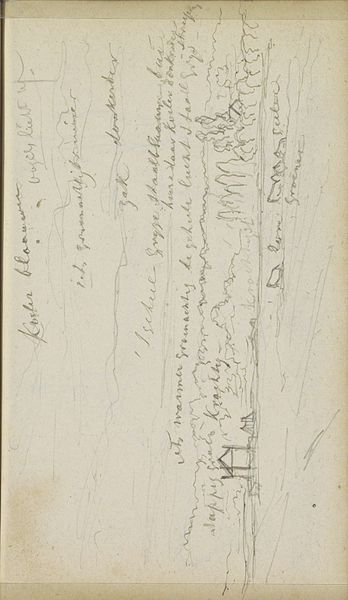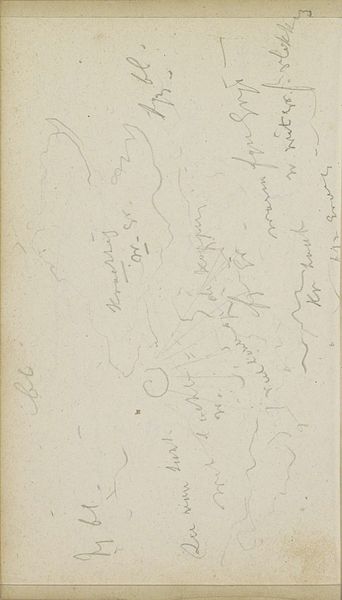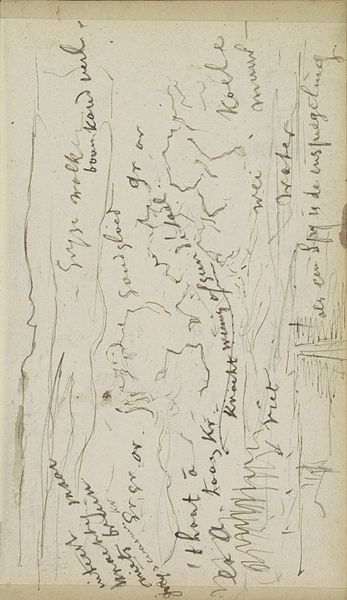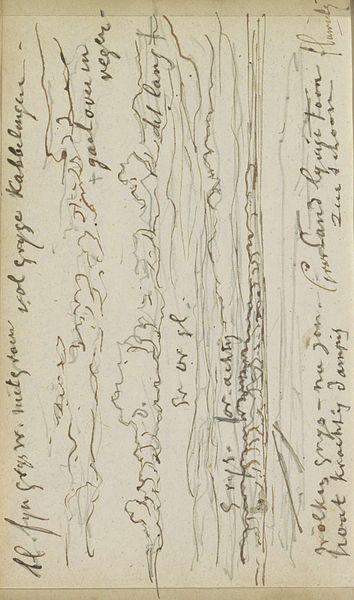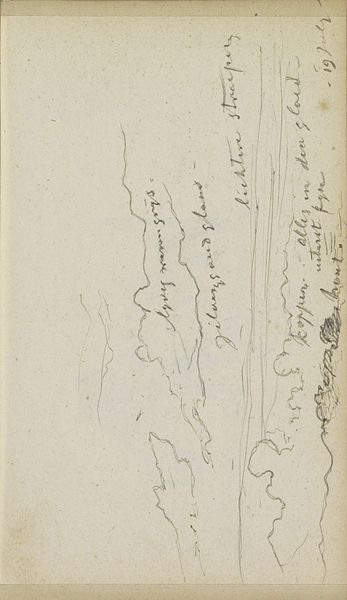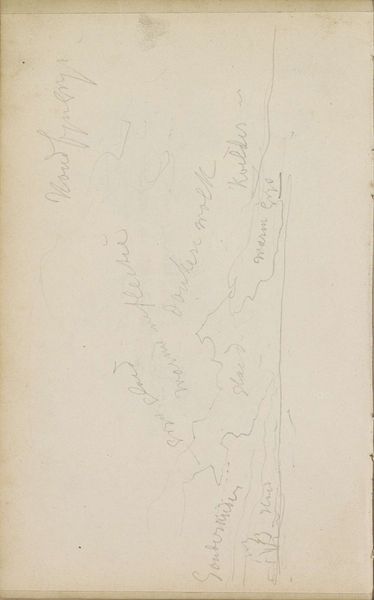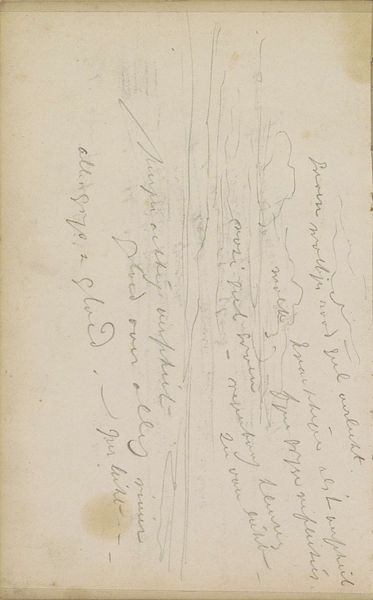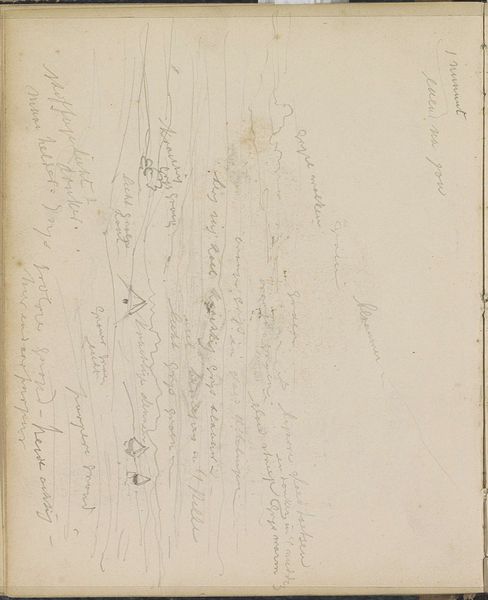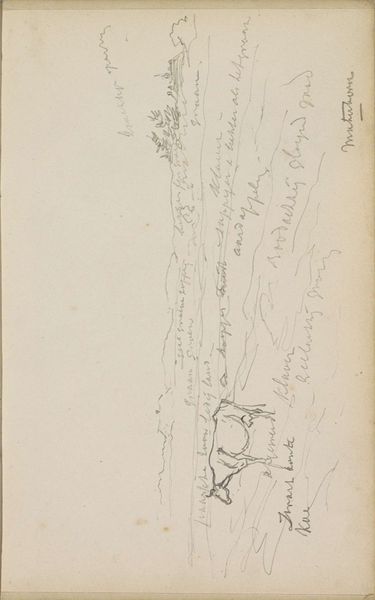
drawing, pencil
#
drawing
#
landscape
#
pencil
#
realism
Copyright: Rijks Museum: Open Domain
Editor: So, this is *Landschap met een molen*, Landscape with a Mill, by Johannes Tavenraat, likely from sometime between 1854 and 1868. It’s a pencil drawing. I’m struck by how raw it feels, almost like a preliminary sketch, and all the annotations and Dutch scribbles within. What do you see in this piece, particularly from a materialist perspective? Curator: I’m interested in this work precisely because it seems to reveal the process of making. The visible pencil lines, the seemingly rapid execution… these elements underscore the artist’s labor. It pushes us to consider not just the 'finished' artwork hanging in a gilded frame, but the physical act of creation itself and all the imperfections involved. It's the residue of the manufacturing of art. What do you make of the paper itself? Does it look like a standard stock for fine art, or something more quotidian? Editor: Now that you point it out, the paper does look a bit… utilitarian. Maybe it was a readily available material, reflecting the resources – or lack thereof – at Tavenraat's disposal. Or even a deliberate choice to subvert the preciousness of traditional drawing papers? Curator: Exactly! This brings in questions about access and class. Who has the resources for expensive materials, and who has to make do? Furthermore, where was this drawing produced? Was it on-site, en plein air, or later in the studio from field sketches? These questions highlight how social and economic conditions are embedded in the work, dictating its very form. The realism here isn't just about representation, but about the real material conditions of its production. Editor: I never really thought about art in terms of the artist’s actual labor before – how the materials themselves are so connected to the world around them. Curator: It encourages us to consider the social fabric from which art emerges, instead of focusing solely on aesthetics or biographical details of the artist. Looking at the means of production can often be more insightful. Editor: I'll definitely look at art in a different light going forward. Thinking about the materials and the making is a whole new dimension! Curator: Agreed. It transforms the act of art viewing, shifting focus toward social and economic forces instead of traditional ideas of artistic genius or abstract beauty.
Comments
No comments
Be the first to comment and join the conversation on the ultimate creative platform.

